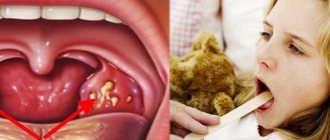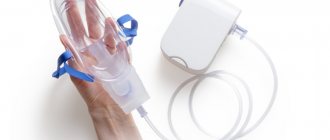Pneumonia in children is a fairly common disease, especially at a young age when the immune system is not yet fully developed. This is a lung infection caused by bacteria, fungi or viruses. It is important to carry out proper infection prevention and be attentive to the first symptoms of the disease that occur in young children. Currently, there is a highly effective treatment for pneumonia, but despite this, serious and dangerous complications are possible.
Bacterial pneumonia is characterized by a sudden onset with fever, respiratory distress, chest pain and deterioration in general condition. Symptoms vary depending on the patient's age. Among respiratory diseases, pneumonia is the leading single cause of childhood mortality worldwide, killing approximately 1.1 million patients before the age of 5 years.
Classification of pneumonia
Types of pneumonia are classified according to the cause. The type of microorganism involved, the location where the child was infected, and how the infection occurred are taken into account. According to the conditions of infection, hospital-acquired (nosocomial), intrauterine and community-acquired pneumonia in children is distinguished. The most common type of disease is the latter, which develops at home mainly against the background of ARVI.
Types of pneumonia in children according to the classification used in clinical practice:
· Focal.
The focus of infiltration has a diameter of 0.5 to 1 cm. Individual areas of infiltration can merge, which leads to the formation of a large focus.
· Segmental.
An entire segment of the lung may be involved in the inflammatory process. It is protracted and often complicated by fibrosis or deforming bronchitis.
· Croupous.
It is characterized by a hyperergic inflammatory process that affects the pleural area.
· Interstitial.
Accompanied by proliferation and infiltration of connective tissue. Develops when affected by fungi, viruses and pneumocystis.
According to the severity of the disease, complicated and uncomplicated pneumonia are distinguished. When complications develop, pulmonary edema, pulmonary insufficiency, pleurisy or abscess are observed. Cardiovascular disorders cannot be excluded.
Along the way, protracted and acute pneumonia in children are distinguished. In the second case, the disease resolves within 4-6 weeks. In a prolonged form, the inflammatory process persists for more than one and a half months. According to etiology, fungal, bacterial, viral and parasitic pneumonia are distinguished.
The clinical classification of childhood pneumonia is important for doctors, because, knowing the place and time of infection of the child, it is possible to determine the form of the pathogen that caused the pneumonia and, accordingly, prescribe effective treatment.
What is pneumonitis
Phthisiatricians and pulmonologists say: pneumonia due to coronavirus, from a medical point of view, is not pneumonia as such. Therefore, a more accurate term would be pneumonitis. In pneumonitis, the virus affects the connective tissue (interstitial). The lungs themselves are made of this tissue, as are some other internal organs (for example, the kidneys and liver). A feature of coronavirus pneumonia is the formation of blood clots in the pulmonary vessels, which further aggravates the patient’s condition, already suffering from a lack of oxygen in the blood. Alveolar lesions, characteristic of bacterial pneumonia, occur in severe forms of coronavirus.
Pneumonitis develops in 20% of patients with COVID-19. Those at risk are those suffering from autoimmune diseases and chronic diseases. This group includes patients with diabetes mellitus. Scientists note that smokers have a higher risk of getting sick due to the destructive effects of nicotine and tar on lung tissue. People suffering from alcoholism also get sick more often, since their immune system is weakened due to constant intoxication with ethyl alcohol. The age factor matters: people over 60 years of age get sick with coronavirus more often than younger people.
Treatment of pneumonia in children
There are several treatment methods for pneumonia that are aimed at relieving symptoms and neutralizing the existing infection. In case of bilateral pneumonia in children, urgent hospitalization in a hospital is recommended, and in severe cases - in the intensive care unit.
To treat pneumonia in children, the following is carried out:
· elimination of infectious and inflammatory process in the lungs;
· detoxification of the body;
· elimination of respiratory failure.
Etiological treatment is carried out immediately after admission to the hospital, after taking samples of biomaterial for bacteriological examination.
Today, for the treatment of pneumonia in children, it has been decided to use step-by-step antibacterial therapy:
To improve the condition, antibiotics are prescribed parenterally (intravenously, intramuscularly), then orally;
· detoxification is carried out by drip parenteral crystalloids, glucose-physiological solution, diuretics;
· if necessary, oxygen therapy is prescribed to correct the composition of gas in the blood (in case of respiratory alkalosis), and in severe cases, it is connected to a mechanical ventilation device;
· to improve the outflow of mucus from the lungs, bronchodilators are prescribed;
· For persistent dry cough, antitussives are prescribed.
After normalizing body temperature, it is recommended to conduct a course of massage, physiotherapeutic procedures, and therapeutic exercises.
Even when the likelihood of a bacterial infection is high, it takes time to identify the bacteria involved and choose the best antibiotic to eliminate it. For viral pneumonia, specific antiviral drugs can be used. If the causative agent is a fungus, then the doctor prescribes antifungal drugs. To increase the effectiveness of treatment, your doctor may recommend using a nebulizer.
Diagnostics
The doctor focuses on the patient’s complaints and the data that he sees and hears. If the doctor listens to the chest with a phonendoscope, he will hear typical wheezing, changes in breathing and so-called crepitus (the noise of a lung affected by inflammation). Bacterial pneumonia can be confirmed by:
- blood tests indicating severe inflammation (leukocytosis, changes in protein levels, clotting);
- X-ray of the chest with areas of darkness where the lung is affected;
- CT scan of the lungs, if the diagnosis is not clear on a regular x-ray;
- culture of sputum for flora with identification of a specific bacteria (or several) and determination of sensitivity to antibiotics;
- saturation (oxygen saturation in the blood) less than 95%.
Additionally, if the case is complex, the doctor may order other tests.
Prognosis and prevention
The best treatment for pneumonia is prevention. Vaccines are available for children from two months of age. It is important to take care of the diet of a patient with pneumonia. During treatment, rest, bed rest and plenty of fluids are recommended to prevent dehydration of the baby's body after the formation of a large amount of mucus and due to increased sweating.
Typically, at the onset of the disease, children experience loss of appetite, but as they recover, it returns to normal. A healthy and nutritious diet is recommended to avoid nutritional deficiencies that can lead to other disorders in the body.
It is necessary to control the environment in which the patient is located, whether in a medical facility or at home. Avoid the presence of smoke (such as tobacco) or other lung irritants that may aggravate the condition.
After discharge from the hospital, children require clinical observation and rehabilitation measures. It is also recommended to strictly follow the doctor’s recommendations after recovery, correct daily routine, and moderate intake of vitamins as a preventive measure. Dosed physical activity contributes to the overall recovery of children and can prevent recurrence of pneumonia.
Stages of disease development
Experts distinguish four stages of disease development:
- Tide. The duration of the stage is from 12 to 72 hours. The vessels of the lungs become overfilled with blood, and fibrinous exudation occurs in the alveoli.
- Red liver. The duration of the second stage is up to 72 hours. The lung tissue thickens and becomes liver-like. Inside the alveoli there is exudate with a high content of red blood cells.
- Gray hepatization. At the third stage, red blood cells disintegrate, and a large number of white blood cells are found in the alveoli. The duration of the stage is from three to six days.
- Recovery. With a positive prognosis, the last stage ends with the restoration of the normal structure of the lungs.
Pneumonia in children - treatment at the RebenOK clinic in Moscow
Our medical center employs pediatricians who have extensive practical experience. Treatment of pneumonia in children is carried out after confirming the diagnosis and determining the type of pathogen, which allows you to get a quick result. Competent specialists determine the symptoms of latent pneumonia in children, which occurs without fever and wheezing.
If signs of a cold appear, it is recommended to consult a pediatrician to rule out the presence of pneumonia or prevent the development of the disease. We use modern diagnostic equipment and prescribe treatment in accordance with international protocols, taking into account the individual characteristics of the patient.
Literature:
1. Erzhanova G.E. Pneumonia in children // Bulletin of the Kazakh National Medical Institute, 2014. URL: https://cyberleninka.ru/article/n/pnevmonii-u-detey (access date: 09/02/2021)
2. Sergeeva E.V., Petrova S.I. Community-acquired pneumonia in children. Modern features // Pediatrician Magazine, 2021. URL: https://cyberleninka.ru/article/n/vnebolnichnaya-pnevmoniya-u-detey-sovremennye-osobennosti (access date: 09/02/2021)
3. Geppe N.A., Kozlova L.V., Kondurina E.G. Community-acquired pneumonia in children // Clinical manual "Moscow Society of Children's Doctors", 2021. URL: https://pulmodeti.ru/wp-content/uploads/Vnebolnichnaya.pdf (access date: 09/02/2021)
4. Petchenko A.I., Luchaninova V.N., Knysh S.V.
Age-related features of the course of community-acquired pneumonia in children // Journal “Fundamental Research” No. 2, 2014. URL: https://fundamental-research.ru/ru/article/view?id=33563 (access date: 09/02/2021) 5. Kakeeva A.A., Bokonbaeva S.D., Dzhanabilova G.A. Etiological structure of community-acquired pneumonia in young children // Journal “Modern Problems of Science and Education” No. 3, 2021. URL: https://science-education.ru/ru/article/view?id=30897 (access date: 02.09. 2021)
Forecasts
Bilateral pneumonia is a deadly disease that must be treated under the supervision of a doctor. With adequate therapy, in most cases the lung tissue is completely restored. In 20% of cases, pneumosclerosis forms in the affected area of the lung. With it, the lung tissue is replaced by connective tissue.
When replacing a significant area of lung tissue, patients experience signs of respiratory failure: shortness of breath, cough, chest pain. If a small area has been affected by pneumosclerosis, no pronounced symptoms are observed.
Symptoms
Both viruses and bacteria are characterized by symptoms such as fever, runny nose, cough, headache, general weakness, decreased or complete loss of performance.
As a rule, viral infections are more common, and therefore, first of all, suspicion falls on them. There are a number of medical criteria that help distinguish one disease from another: 1. The incubation period of the virus is much shorter than that of the infection. During a viral infection, symptoms appear either immediately or after a few days, and the bacterium manifests its “malignancy” after a week, or even two.
2. In addition to the fact that a viral infection very quickly affects the human body, little time passes between the various symptoms of the disease, and the clinical picture of a bacterial infection develops more slowly. 3. Bacteria penetrate the body of a person with a weakened immune system, and viruses can infect an absolutely healthy person.
Another difference is that antibiotics do not cause any “harm” to viruses.










